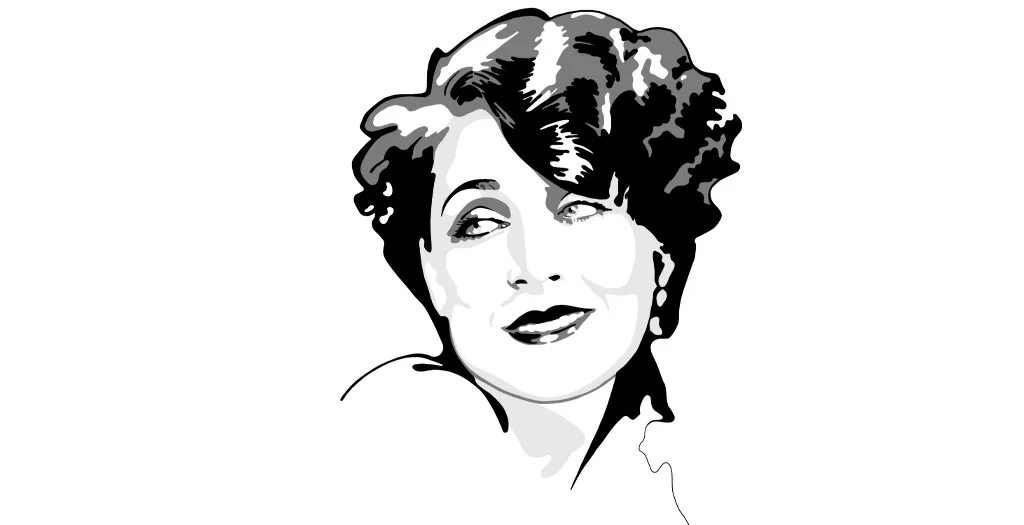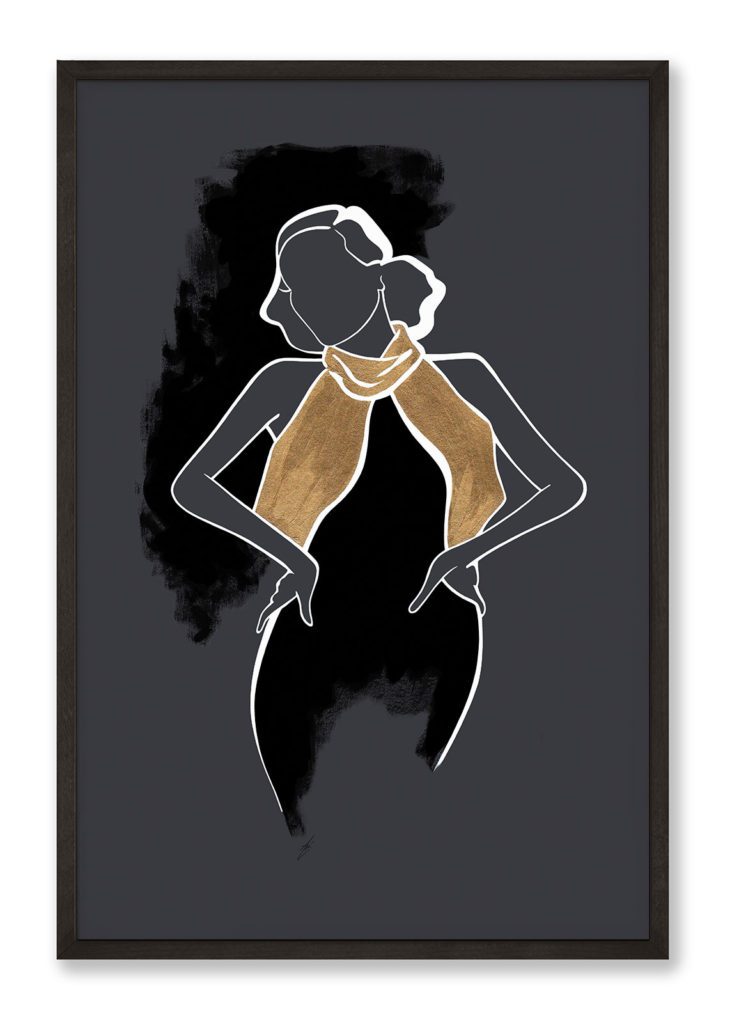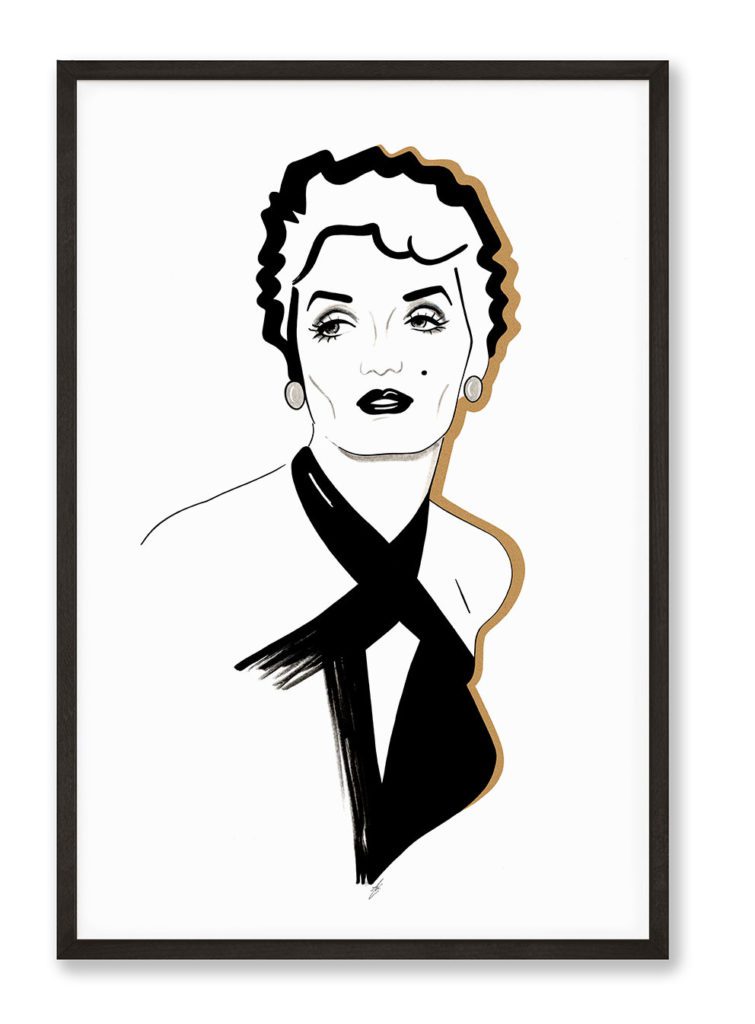Norma Shearer
The exemplar of sophisticated modern womanhood




Hi, I'm Kate!
What I am most passionate about is to inspire you to see that your life is your own and biggest masterpiece.
Norma Shearer is one of the most impactful film actresses of classic Hollywood cinema according to the American Film Institute. She had a rather short career in Hollywood and already retired by the age of 40. Nevertheless she made an indelible mark on Hollywood history and we are going to find out why.
LISTEN TO THE PODCAST
SUBSCRIBE TO THE PODCAST
Beginnings
Edith Norma Shearer was born on August 11, 1902 in Montreal, Quebec as the youngest of three kids. Her parents were of Scottish, English and Irish descent. The start of her life was rather charming, growing up in a wealthy family as her father had a very successful construction business. But things were not as picture-perfect as they would seem. Her father suffered from manic depression, which of course was not well understood back then and put a burden on the family and the marriage of Shearer’s parents was an unhappy one. Her mother, Edith Fisher Shearer was quite the opposite of her husband – very stylish, flamboyant, attractive and trying to get the most of life.
The cushy life that Norma was leading came to a sudden when Andrew’s construction business collapsed in 1918, when Norma was a 16-year old teenager. Her older sister Athole would suffer her first serious mental breakdown that very year. Because of the financial situation the family had to leave their beautiful home and move to a small and drab house in a rather poor suburb of Montreal. A short while later, Edith would leave her husband and move with her two daughters to a boarding house, while her oldest son, Douglas Shearer, would stay with his father.
During her childhood, Norma Shearer was very interested in music, but after seeing a vaudeville show at the age of nine inspired her to become an actress. But, Norma Shearer was far from being the perfect Hollywood beauty she saw on the screen and she herself „had no illusions about the image (she) saw in the mirror.“ She saw her rather unfavorable figure, her broad shoulders, her short sturdy legs, her sturdy hands as well as her small eyes as well as one being affected with strabismus. Despite these disadvantages or maybe because of them her determination to make it, to overcome her shortcomings and make her dreams come true was born. And the downturn of events when her father’s business crashed fueled her determination even more. As she put it: „At and early age, I formed a philosophy about failure. Perhaps an endeavor, like my father’s business, could fail, but that didn’t mean father had failed.“
Things changed once again when her uncle encouraged Edith to take her daughters to New York, where the movie business was largely operating, to try their luck in show business. So, Edith sold the piano Norma used to play on and acquired a letter of introduction from a local theatre owner to Florenz Ziegfeld – THE guy to enter showbusiness.
New York
Norma Shearer arrived in New York with her sister and mother in 1920. And their living standards were not better than back in Montreal by any means. They lived in a very small apartment with only one double bed and a shared bathroom at the end of the hallways. The two sisters took turns to sleep with their mother in the bed – but sleeping in and of itself was difficult as the elevated trains were rattling past their windows at all times.
Her introduction to Florenz Ziegfeld was anything but successful. He called her a „dog“ and commented on her crossed eyes and short legs. But Norma Shearer’s determination was not broken. She went on to an audition by Universal Pictures. Universal was looking for eight pretty girls as extras. But when Norma got there with her sister, there were already 50 others in front of them. Well, Norma was clever. When the seventh girl had been picked and the guy picking was still way down the line, she knew chances were slim that he would pass on all the girls before her. So she staged a loud cough, made the guy look – and got the part. She would do some other extra parts – and one of themes Way Down East, the famous Lilian Gish movie by D.W. Griffith. Norma, determined to become a star, introduced herself to Griffith. But he would say: „Eyes no good. A cast in one and far too blue; blue eyes always look blank in close-ups. You’ll never make it.“ With that he would turn and leave her.
And yet, despite being turned down and critized by two of the most influential men in show and movie business, Norma Shearer went ahead, undeterred in her determination. Instead of wallowing in a pity party, she got to work. First, she went to a specialist to get her eye treated and would do the recommended exercises tirelessly to improve. She would also practice how to pose to conceal her physical flaws that both Ziegfeld and Griffith had criticized. And she would try to learn from the best, sitting in the audience of Broadway theaters and studying the likes of Ina Claire, Lynn Fontanne and Katherine Cornell. To make ends meet, Norma Shearer would work as a model, successfully so. And after one year she finally got her break and starred in the 1920 B-movie The Stealers. And then – nothing!
Louis B. Mayer & Irving Thalberg
It was only after three more long years that luck knocked on her door – and it came in the form of Irving Thalberg, newly appointed vice president of Louis B. Mayer, who sent a telegram to her agent, inviting her to come to his studio. So, in 1923 Norma Shearer packed her things and made her way to LA together with her mother Edith.
And then the first screen test happened. In short: it was a disaster. They filmed her with flat lighting, so light from all sides, which was custom back then. It was a method to erase all wrinkles or blemishes. But in Norma Shearer’s case it was terrible. Light from both sides made her eyes look almost white, her nose really small and flat and her strabismus come out more than ever. She looked not less than beautiful, the screen test made her look hideous. And of course, Thalberg and Mayer thought the same. Shearer was enraged and disappointed because she felt truly poorly handled. It was famed cameraman Ernest Palmer that came to her rescue. He met the enraged, fierce and determined young actress and screened the test again, acknowledging that the test was not done in a way that was becoming. He did one with her again, with the right lighting – and it was a success.
But, not everything was peachy from then onwards. She did not get the lead role she had been hoping for and was relegated to a minor role in the movie The Wanters. And when she did accept her next role she knew quite well, just like Mayer and Thalberg that she better performed at this movie or she would be let go from her contract.
And what then happened was plain awesome – Louis B. Mayer probably knew about her determination, her will to succeed and prove everybody wrong. When problems arouse on the set and the director complained about Norma, she was ordered to Mayers office and when Shearer confided in him that she was afraid of the director who had shouted at her, Mayer apparently staged such a scene, such an outburst calling her foolish to throw away her career because of a director that Norma Shearer became stubborn once again – telling Mayer „I’ll show you! You’ll see!“ When she went back to the set, she filmed the next scene with fierce, raw and pure emotion – and everybody was immensely impressed by her. She would be cast in six more movies within the short time period of merely eight months and made her one of the stars of Louis B. Mayer Pictures. And that was a good thing, because the next year Louis B. Mayer Pictures merged with the Samuel Goldwyn Company and Metro Pictures and they formed Metro-Goldwyn-Mayer (MGM).
MGM
Shearer was cast in the new studio’s first production He Who Gets Slapped, which was a tremendous success and made the studio instantly the biggest player in Hollywood. Another year later, Shearer had entered the realms of stardom, was the biggest moneymaker for MGM and signed a contract that would bring her $1000/week initially and would rise to $5000/week over the course of five years. She would use the money to buy a house of her own on Vine Street, right underneath the Hollyoowdland sign, which would later become the Hollywood landmark sign.
Within the two years, Norma Shearer starred in 13 silent movies for MGM – each one a box-office as well as a financial success, making more than $200,000 per movie for the studio with production costs considerably lower than $200.000. She was rewarded by the studio with a prestigious production of Ernst Lubitsch’s The Student Prince of Old Heidelberg with a production budget of over $1,000,000.
Sound movies
And then came sound in the form of The Jazz Singer, the first feature-length motion picture with sound. And if anything, Norma Shearer was determined that her career would not be one of those going down with the silent movies that had made her a star. Her older brother Douglas Shearer had started working at MGM when Norma was already signed and he came to LA to visit his mother and sister – and stayed. He actually was the one in charge of sound development at MGM or as he put it: “What I knew about sound you could have put in a nutshell. Overnight I became the one-man sound department. They ordered me to do the job; they didn’t give it to me. And probably they wouldn’t have given it to me except that they were desperate.“ And everything possible was done to prepare Norma Shearer for the talkies. And she was a full-on success in her first sound movie The Trial of Mary Dugan in 1929. Her voice was pleasant, medium-pitched, with a Canadian accent, which is always nice – not quite American, not quite foreign. And she would film some more successful sound movies. Until she got nervous, fearing that the audience would soon resent her good girl image and turn away. So, she took advice from her friend Ramon Novarro, relative of Hollywood star Dolores del Rio. He suggested to her to go visit an unknown photographer by the name of George Hurrell. And if we, today, know anything, we know that George Hurrell can take the best pictures. He took photographs of Norma Shearer that made her look so sensual and seducing and liberated that Irving Thalberg had to concede that Norma Shearer was the right one for the role of Jerry in the pre-Code movie The Divorcee in 1930.
Liberated Women & Period Dramas
This is also the movie, for which Shearer won her only Academy Award. And she would follow it up with a series of similar pre-Code movies like Let Us Be Gay, Strangers May Kiss, A Free Soul, Private Lives and Strange Interlude. All of them flat-out successes that placed Norma Shearer on level with Joan Crawford, Jean Harlow and Greta Garbo. Her successful role of a liberated woman came to a stop when the Production Code was enforced in 1934. Shearer moved to period dramas and „prestige“ pictures instead. Her most successful of these productions was The Barretts of Wimple Street in 1934 – for the most part because some parts slipped by the production code in these early days. 1938’s Marie Antoinette was the one in which Norma Shearer donned the most elaborate costumes. Norma worked on Marie Antoinette with director George Cukor, who was observant enough to realize that Norma Shearer was harder on herself than anybody else and that it needed a different way of working than other actors, who usually needed some more inspiration to work harder, Norma Shearer needed sympathy and reassurance of her performance.
Later Life
She would do assume some unusual roles in 1939 and 1940. First, in Delight, her third and final film with Clark Gable, a dark comedy. Next The Women with an all-female cast, all in all 130 female speaking roles and not one male character. And, finally, 1940’s Escape, in which she played the lover of a Nazi general. Her subsequent two movies, We Were Dancing and Her Cardboard Lover failed at the box-office and Norma Shearer would unofficially retire from the movies.
Norma Shearer died on June 12, 1983 from bronchial pneumonia at the Motion Picture Country Home in California and is entombed in the Great Mausoleum at Forest Lawn Memorial Park in Glendale, California.
Relationships
Irving Thalberg – Norma Shearer met future husband Irving Thalberg right at the beginning of her Hollywood career with Thalberg sending for her via telegram. Apparently, Norma Shearer had been – and I quote – “impressed by his air of dispassionate strength, his calm self-possession and the almost black, impenetrable eyes set in a pale olive face“. Thalberg on the other hand was impressed by her determination and her will to succeed. They only were three years apart when they met, Norma 23 years old, Thalberg 26. Nevertheless, Norma Shearer was attracted by his commanding presence he already possessed at that young age as well as his graceful manners. It was in July 1925 that these two attended the premiere of Charlie Chaplin’s The Gold Rush officially together as a couple. Norma was madly in love with Thalberg and quite certain that they would get married. Which they did about two years later. It was while Shearer was filming her prestigious project The Student Prince, that Thalberg called her into his office where she picked her own diamond engagement ring. Of course, Norma picked out the biggest. They got married in September 1927 and had two children: Irving Thalberg Jr and Katherine Thalberg. Of course, Norma had to convert to Judaism to be able to marry Thalberg, which she gladly did. Unfortunately, Thalberg died unexpectedly after only nine years of marriage because of a heart defect he had had since birth. Business-savvy Norma Shearer made sure that all of Thalberg’s percentages of films that he had worked on were still paid to his estate.
James Stewart – Norma Shearer and James Stewart had an affair during the filming of The Shopworn Angel in 1938. Apparently Norma had been so impressed with his romantic performance in the movie that she set out
Mickey Rooney – Norma Shearer had an affair with Rooney when Rooney was 19 years old and Shearer already 39. Apparently, Louis B. Mayer himself ended the fling.
George Raft – Norma Shearer and George Raft met at a dinner party and were instantly smitten with each other – so they entered into a very passionate affaire. But as George Raft was still married to actress Grayce Mulrooney who refused to grant him a divorce. So, Norma ended the affair.
Martin Arrougé – Norma Shearer met Martin Arrougé, a first-generation American when he worked as a ski instructor her kids. He almost looked like a more athletic version of Thalberg and was able to adore her the way Norma Shearer needed to be adored. They married in 1942, six years after Thalberg’s death and Arrougé stayed with Norma for the remainder of her life.
And, apparently, there had also been affairs with directors Victor Fleming and Monta Bell.
Legacy
Mick LaSalle said about her that she is „the exemplar of sophisticated modern womanhood and .. the first American film actress to make it chic and acceptable to be single and not a virgin on screen.“ Her legacy is the lasting influence she had on the depiction of women and how they behaved especially her pre-code films which got a new appraisal in the 1990s, when Turner Classic Movies showed her movies which had largely been banned from showing since 1934.
Norma Shearer was the first person to receive five Oscar nominations for acting.
Style
Norma Shearer was one of the most famous stars of the 1930s, the decade of long, slinky, bias-cut gowns. And she was also one of the first women to trust costume designer Adrian fully. He established her glamour image for her famous role in The Divorcee in 1930. Although there is no particular style attributed to Shearer, she always made sure to cover her perceived flaws and to look the regal MGM queen that she was. This was also mirrored in the costumes for her period dramas, like Marie Antoinette. Marion Davies recounted one of her costume parties at San Simeon that Shearer attended in her Marie Antoinette dress that actually did not fit through the door – and Shearer had to enter through the terrace.
With all my love!
xx






